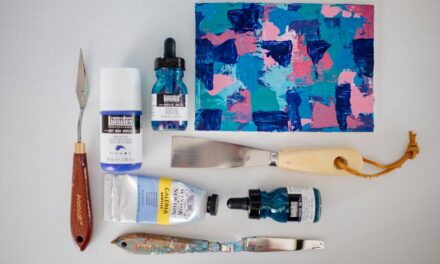Rock painting is a delightful and accessible form of artistic expression that has gained popularity in recent years. This engaging activity allows individuals of all ages to unleash their creativity while connecting with nature. The simplicity of the medium—rocks—combined with the versatility of paint, opens up a world of possibilities for artistic exploration.
Whether you are a seasoned artist or a complete novice, rock painting offers a unique opportunity to create something beautiful and meaningful. The practice of painting rocks is not merely a modern trend; it has roots in various cultures throughout history. From ancient cave paintings to the decorative stones found in indigenous cultures, the act of embellishing natural materials has long been a way for humans to express their thoughts, beliefs, and emotions.
Today, rock painting has evolved into a popular pastime that fosters community spirit, encourages mindfulness, and promotes environmental awareness. As we delve into the materials, techniques, and ideas for rock painting, we will discover how this simple activity can enrich our lives and inspire creativity.
Summary
- Rock painting is a fun and creative outdoor art activity that can be enjoyed by both kids and adults.
- The materials needed for rock painting are easily accessible and include rocks, acrylic paint, paintbrushes, and a sealant.
- A step-by-step guide to rock painting includes cleaning the rocks, sketching the design, painting the rocks, and sealing the finished artwork.
- Rock painting ideas for kids can include animals, flowers, and simple patterns, while adults can explore more intricate designs and themes.
- Hosting a rock painting party can be a great way to bring people together for a fun and creative activity, with tips including providing a variety of paint colours and rock sizes.
Materials Needed for Rock Painting
Gathering the Perfect Rocks
The first and foremost item on your list should be rocks themselves. Look for smooth, flat stones that are easy to paint on; river stones or pebbles are excellent choices due to their natural shapes and surfaces. You can find these in your garden, at local parks, or even purchase them from craft shops. The size of the rocks can vary depending on your preference, but starting with medium-sized stones can be ideal for beginners.
Choosing the Right Paint
Once you have your rocks, you will need paint.
It adheres well to stone surfaces and dries quickly, allowing for multiple layers if desired.
Adding Finishing Touches
Additionally, you may want to invest in paintbrushes of various sizes to achieve different effects and details in your artwork. For finer details, consider using fine-tipped brushes or even paint pens. Lastly, don’t forget to have a sealant on hand; a clear acrylic spray or varnish will protect your painted rocks from the elements if you plan to display them outdoors.
Step-by-Step Guide to Rock Painting
To begin your rock painting adventure, start by preparing your workspace. Choose a well-ventilated area where you can comfortably sit and work without distractions.
Once your workspace is ready, select the rocks you wish to paint and give them a good wash to remove any dirt or debris. Allow them to dry completely before proceeding. Next, sketch out your design lightly with a pencil on the surface of the rock.
This step is particularly helpful for those who may feel uncertain about freehand painting. Once you are satisfied with your design, it’s time to apply the base coat of paint. Use a larger brush to cover the entire rock with a solid colour if desired; this will serve as the background for your artwork.
Allow this layer to dry before adding details or additional colours. As you paint, remember to layer your colours and use different brush techniques to create texture and depth in your design.
Rock Painting Ideas for Kids
Rock painting is an excellent activity for children, as it encourages creativity while also being a fun and engaging way to spend time outdoors. One simple idea is to have kids paint their favourite animals or characters on rocks. They can use bright colours and bold patterns to bring their creations to life.
Another fun concept is to create a set of “kindness rocks.” Children can paint uplifting messages or positive affirmations on their stones and then hide them around their neighbourhood for others to find, spreading joy and encouragement. For younger children, consider using stencils or stamps to create designs on the rocks. This approach allows them to explore their artistic side without feeling overwhelmed by the need for precision.
Handprints or footprints can also be transformed into adorable creatures or flowers with just a bit of imagination. By incorporating themes from nature or favourite stories, children can create personalised pieces that reflect their interests and personalities.
Rock Painting Ideas for Adults
While rock painting is often associated with children, it can be equally rewarding for adults seeking a creative outlet. One popular idea is to create intricate mandala designs on rocks. The repetitive patterns and vibrant colours can be meditative and relaxing, making it an ideal activity for stress relief.
Adults can also experiment with abstract art or impressionistic styles, allowing their emotions and thoughts to guide their brushstrokes. Another engaging project for adults is creating themed sets of painted rocks that can be used as garden decor or home accents. For instance, one could paint a series of rocks inspired by the four seasons—each stone representing the colours and motifs associated with spring, summer, autumn, and winter.
Alternatively, consider painting inspirational quotes or personal mantras on larger stones that can serve as focal points in a garden or indoor space. These artistic expressions not only beautify surroundings but also provide daily reminders of positivity and motivation.
Tips for Hosting a Rock Painting Party
Hosting a rock painting party can be an enjoyable way to bring friends and family together for a creative experience. To ensure a successful gathering, start by selecting an appropriate location—preferably outdoors if weather permits—where participants can spread out comfortably. Provide ample tables and seating so everyone has enough space to work on their projects without feeling cramped.
When it comes to supplies, make sure you have enough rocks, paints, brushes, and sealants for all participants. Consider setting up different stations with various materials so guests can experiment with different techniques and styles throughout the event. To keep the atmosphere lively, play some music in the background and encourage conversation among guests as they paint.
You might even want to incorporate snacks and refreshments to keep everyone energised during the creative process.
Creative Ways to Display Painted Rocks
Once you have completed your painted rocks, showcasing them becomes an exciting part of the process. There are numerous creative ways to display these artistic creations that can enhance both indoor and outdoor spaces. One popular method is to arrange them in a decorative garden bed or along pathways in your yard.
Grouping rocks by colour or theme can create visually striking displays that draw attention and admiration from visitors. For indoor displays, consider using shallow bowls or glass jars filled with sand or pebbles as bases for your painted rocks. This not only provides stability but also adds an element of texture to your decor.
Alternatively, you could create a gallery wall by mounting smaller painted rocks in shadow boxes or frames, allowing them to be appreciated as miniature works of art. Whichever method you choose, displaying your painted rocks adds a personal touch to your environment while celebrating your creativity.
Benefits of Rock Painting as an Outdoor Art Activity
Engaging in rock painting as an outdoor art activity offers numerous benefits beyond mere enjoyment. Firstly, it encourages individuals to connect with nature while fostering mindfulness—a practice that has been shown to reduce stress and improve overall well-being. The act of painting outdoors allows participants to immerse themselves in their surroundings, promoting relaxation and creativity simultaneously.
Moreover, rock painting serves as an excellent social activity that brings people together across generations. Whether it’s families bonding over shared creativity or friends gathering for a fun afternoon, this art form fosters connections and strengthens relationships through collaborative expression. Additionally, by creating kindness rocks or community art projects, participants contribute positively to their neighbourhoods, spreading joy and inspiration through their artistic endeavours.
In conclusion, rock painting is not only an enjoyable pastime but also a meaningful way to express creativity while connecting with others and nature. With minimal materials required and endless possibilities for design, it is an activity that can be embraced by anyone—regardless of age or skill level. So gather your supplies, unleash your imagination, and let the world of rock painting inspire you!
If you are looking for more inspiration for outdoor art activities, you should check out The Creative Space. This article explores different ways to get creative in the great outdoors, from painting to sculpture. It’s a great resource for anyone looking to expand their artistic horizons. So grab your paintbrushes and head outside for some fun and creative rock painting ideas!


